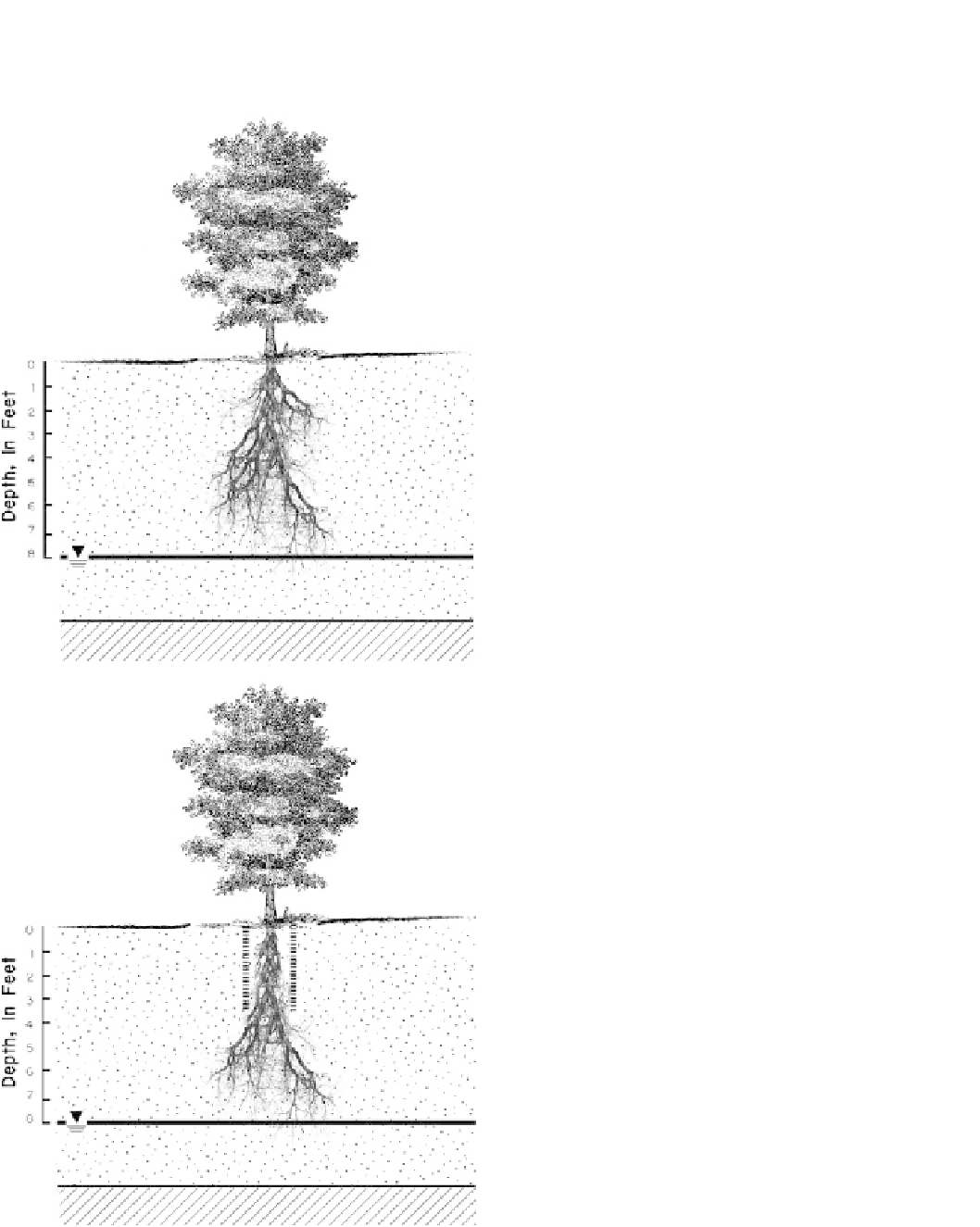Environmental Engineering Reference
In-Depth Information
permeability than the surrounding aquifer are added to the
borehole (Fig.
8.9
). A tree is then planted in the borehole,
and a pipe is installed from the root zone to the surface to
increase air exchange. At the surface, the borehole is sealed
such that no infiltration can occur.
At the Argonne site, 420 poplar trees (hybrid HP 510
Androscoggin poplar x
HP 308
Charkowiensis incrassata
)
were planted using this deep-rooting method. The trees were
planted in 2-ft (0.6 m) diameter boreholes drilled to 30 ft
(9.1 m), and lined with plastic. Each borehole was placed
16 ft (4.8 m) apart. The plastic lining is part of the
TreeWell
Treatment System to ensure that root growth is
vertical and downward toward groundwater (Fig.
8.9
). The
backfill consisted of topsoil, sand, peat, and manure. Con-
ventional planting methods were used to install 389 willows
in shallow, contaminated soils.
A groundwater-flow model was used to estimate the
future impact of the deep rooted trees on groundwater
flow. The USGS model MODFLOW (McDonald and
Harbaugh 1988) was used to simulate groundwater flow. A
steady-state flow model was constructed and calibrated to
groundwater levels collected over a 10-year period at the site
prior to planting. The agreement between measured and
simulated groundwater levels was very good, with a measure
of spread, the root mean square error (RMSE) of 0.58 ft
(0.1 m). Next, transient simulations were run to simulate the
potential release of groundwater from storage in the system.
Removal of groundwater by the trees was simulated using
the ET module in MODFLOW. The ET module linearly
relates the rate of
ET
to the depth of the water table;
ET
is
at a maximum rate when the water table is high within
a particular model cell and
ET
drops to zero at a
predetermined lower water-table level called the extinction
depth; more about this assumption is described in Chap. 14.
This transient model was then used to predict the impact that
the deep-rooted trees would have on groundwater flow at the
site 6 years into the future from plant installation in 1999.
Simulation results suggested an impact on the groundwa-
ter-flow system as early as the summer of the second year, or
2001. Simulations indicate that in future years, the plants
will exert a seasonal effect on the confined groundwater
system, with lowered groundwater levels during the
6-month growing season at the site, from April to September,
and higher levels during the other months. The effect was
not cumulative, because the cycle of higher and lower head
with seasonal changes in groundwater use by the plants was
consistent for all simulated future years.
The rate of conservative solute movement with particles
of groundwater from source areas to discharge areas also
was simulated using the USGS model MODPATH (Pollock
1994). The particle-tracking simulations performed were
used to determine if groundwater particles could be captured
by the plants. The simulations indicated that hydrologic
control and groundwater containment were reached. The
simulations indicate that most of the particles released in
upgradient source areas in the confined aquifer were
™
Fig. 8.9
The variation in root distribution with depth for hybrid poplar
trees installed with and without shallow borehole constriction methods.
One foot is equivalent to 0.304 m.

Search WWH ::

Custom Search